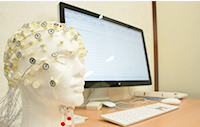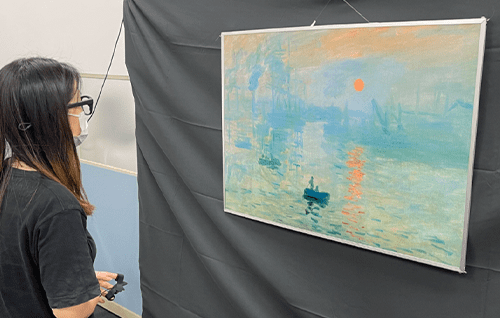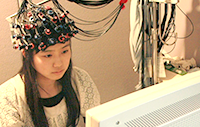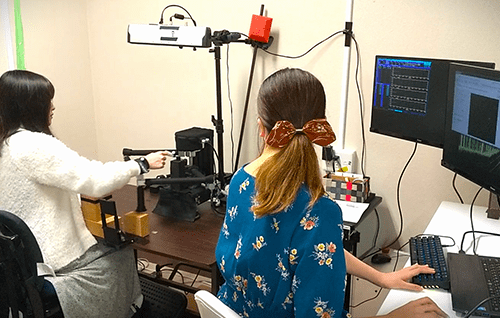Introduction to Laboratories
Seven faculty members hold Laboratories for undergraduate students.

- Umeda-Cognitive Neuroscience Laboratory
-
Towards an integrated understanding of “Mind-Brain-Body” interactions, our lab focuses on various cognitive functions by using multiple research methods.

- Kawabata-Aesthetic Psychology Laboratory
-
In our Laboratory, we holistically study the aesthetic experience and cognition of humans and animals, based on Perceptual Psychology and Cognitive Psychology. In particular, we are involved in elucidating mind and brain functions as the basis of the subjectivity of experience, beauty and arts, recognition of interpersonal attraction, and love. We hope to develop a holistic field of Aesthetic Science in cooperation with other fields of study, including Humanities and Social Sciences (aesthetics, art history, economics, and political science), Medical Science (endocrinology and beauty science), Natural Science, and Human Engineering.

- Terasawa-Affective Neuroscience Laboratory
-
We are studying the mind-body interaction for feeling emotions. In addition to the methods of experimental psychology and physiological psychology, we also use the methods of cognitive neuroscience and neuropsychology to consider the questions of how emotions are experienced.
We are challenging this theme through the individual differences in feeling emotions such as interoception, anxiety, and alexithymia.

- Minagawa-Developmental Cognitive Neuroscience Laboratory
-
Our laboratory studies the senses, including vision, smell, and tactile perception, with special emphasis on auditory studies such as speech, language, and music using NIRS and eye cameras. At the Baby Laboratory, we also study the linguistic capacity and social cognition of infants and children. Students at our Laboratories may perform brain function experiments and psychological experiments on infants for their graduate research.

- Itaguchi-BoMB-Cog Laboratory
-
Our laboratory investigates brain functions related to the interaction between BOdy, Movement, Brain and COGnition, using a combination of psychological experiments, kinematic analyses, physiological measurements, and VR equipments. We aim to elucidate the mechanisms subserving language, visual cognition, somatosensory perception, and motor control by examing university students, elderly people, patients with dementia, and stroke patients.

- Kita-Clinical Developmental Psychology Laboratory
-
Our laboratory conducts experimental and clinical researches on child development and its disorders. In experimental research, we address the associations between cognitive development and brain functions for neurodevelopmental disorders such as specific learning disorder. In clinical research, we provide psychological assessments and supports that are tailored to the needs of each child and adolescent.

- Toda-Learning and behavior Laboratory
-
We are interested in understanding the mechanisms of learning and behavior. Advances in psychology and neurobiology have made it feasible to pursue the detailed neural circuits underlying learning and behavior. We are particularly interested in how goal-directed and voluntary actions are controlled by psychological and physiological processes. We use a broad array of techniques, including behavioral analysis, single- and multiple-neuronal recordings, pharmacology, chemogenetics, optogenetics, and machine learning techniques to answer this question.
